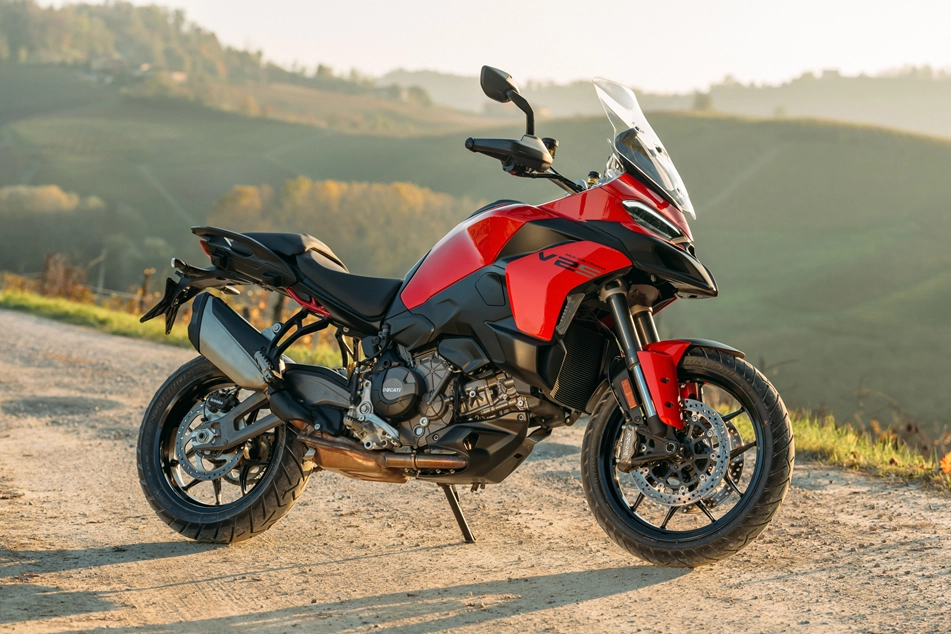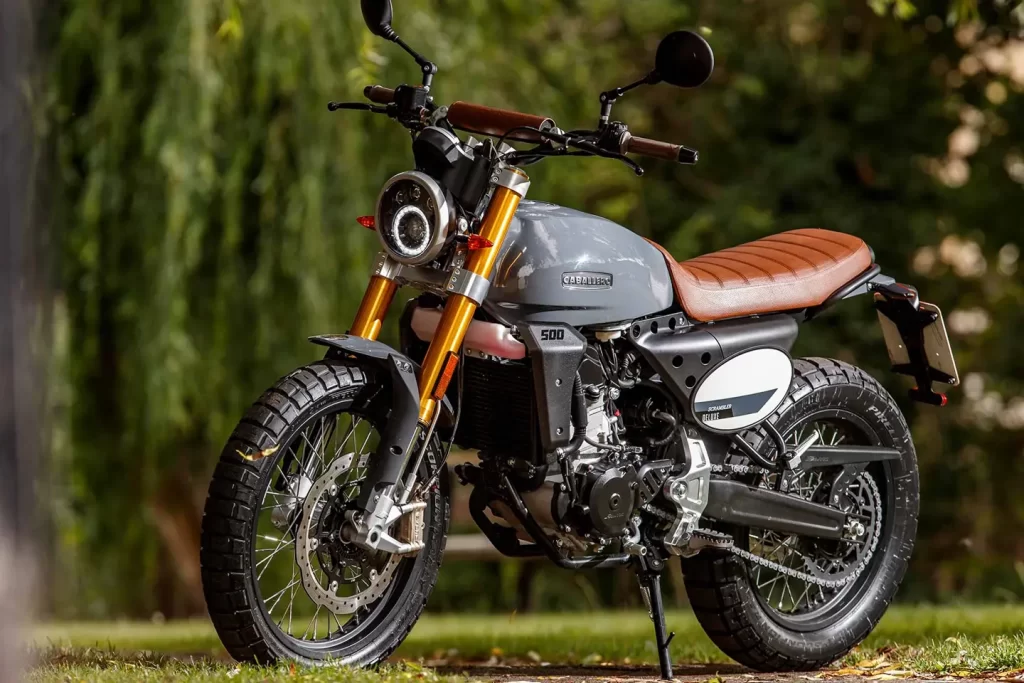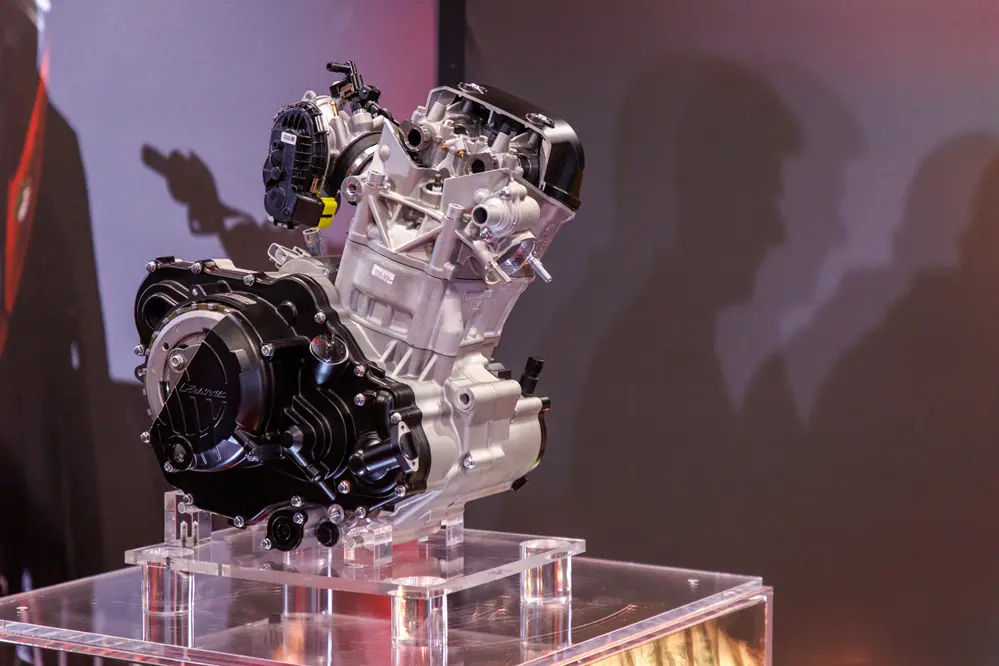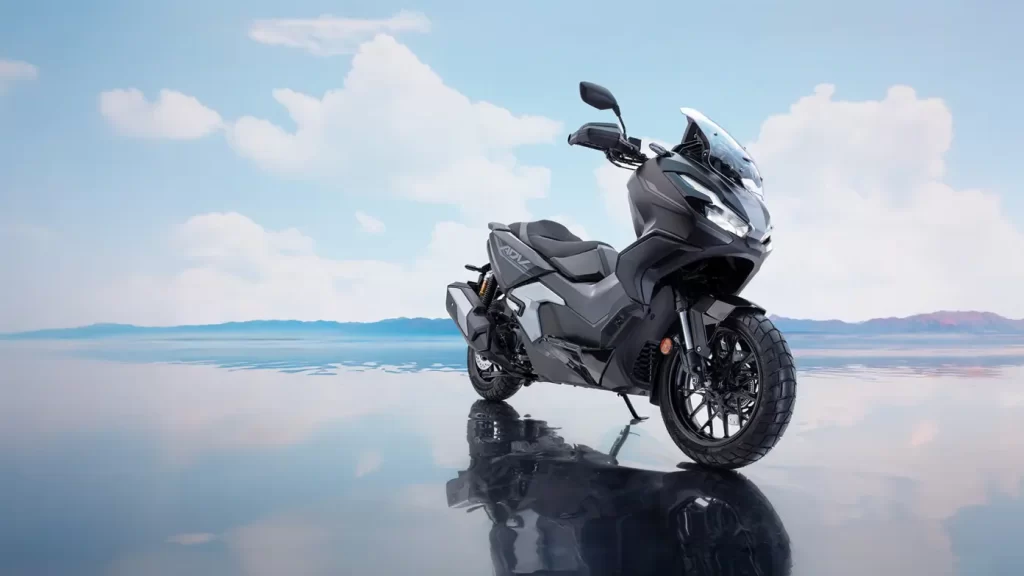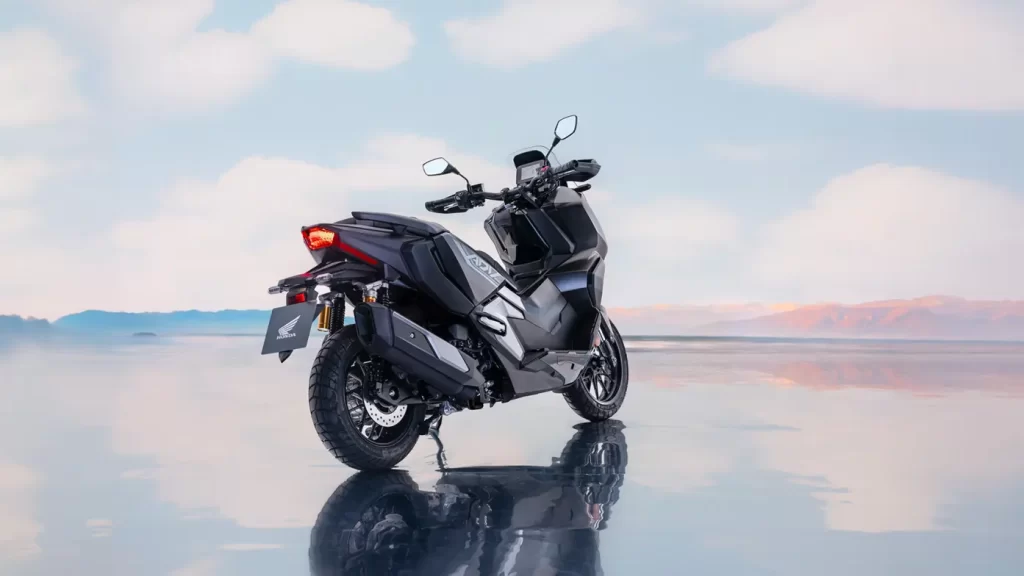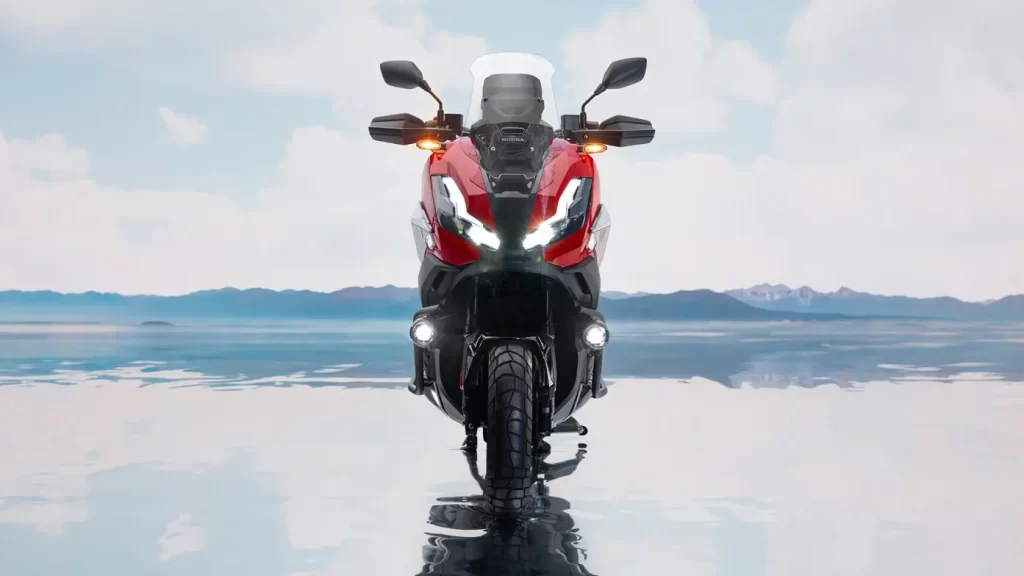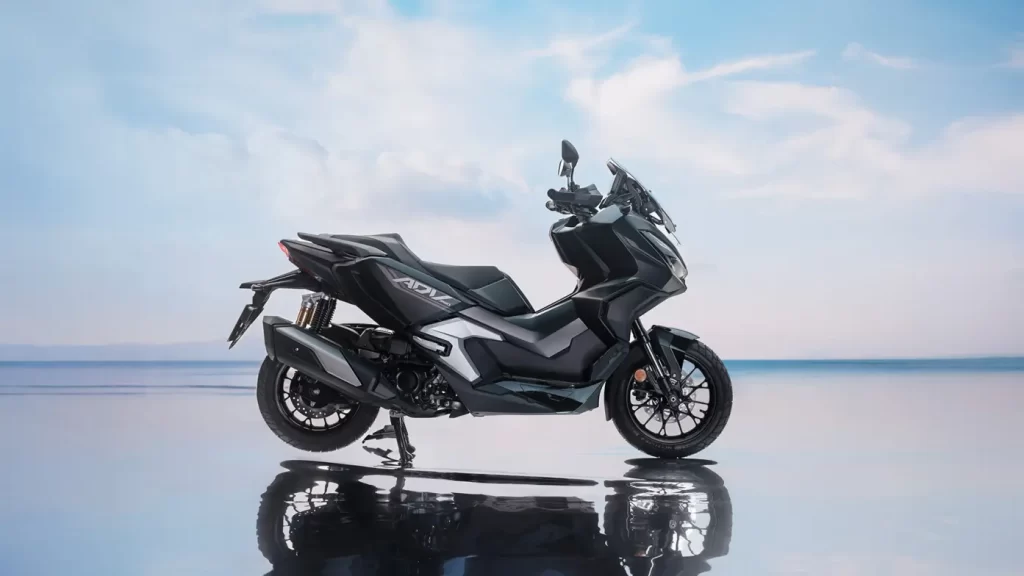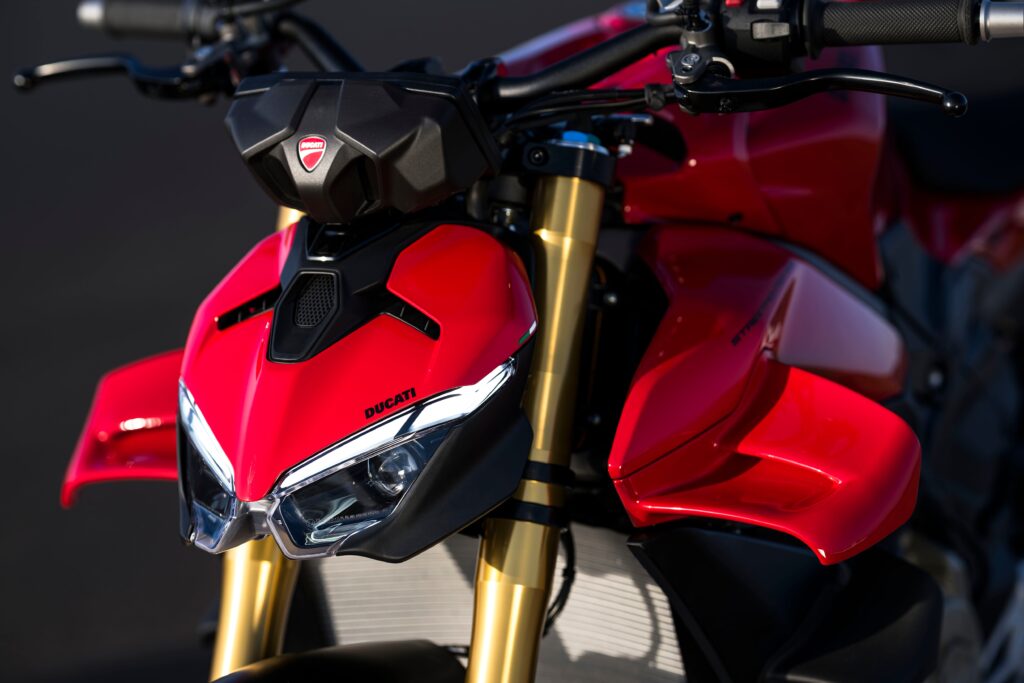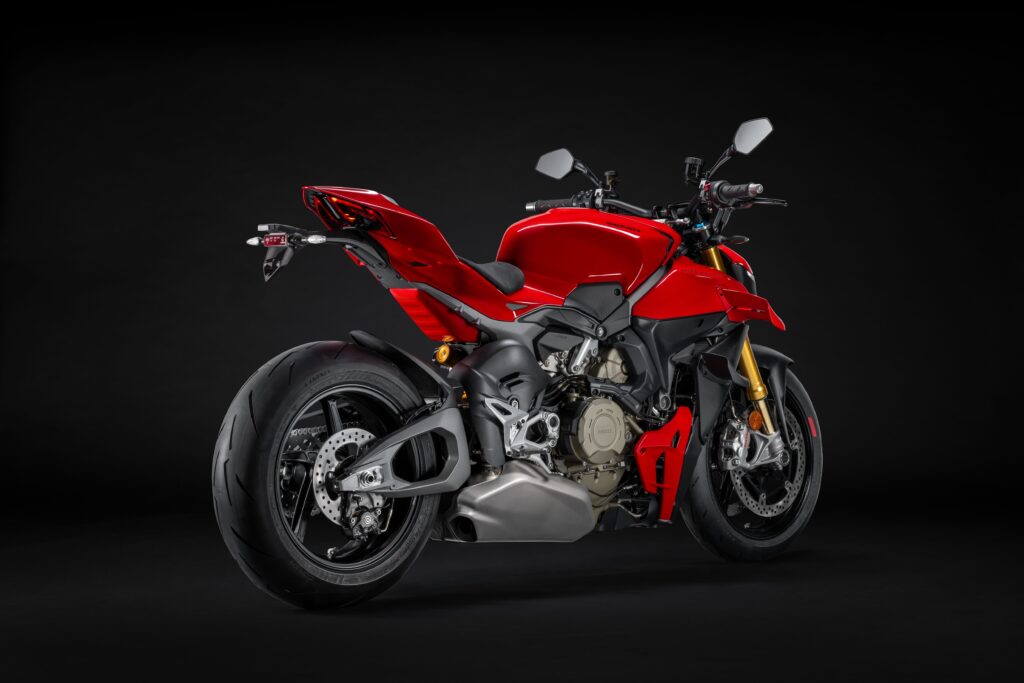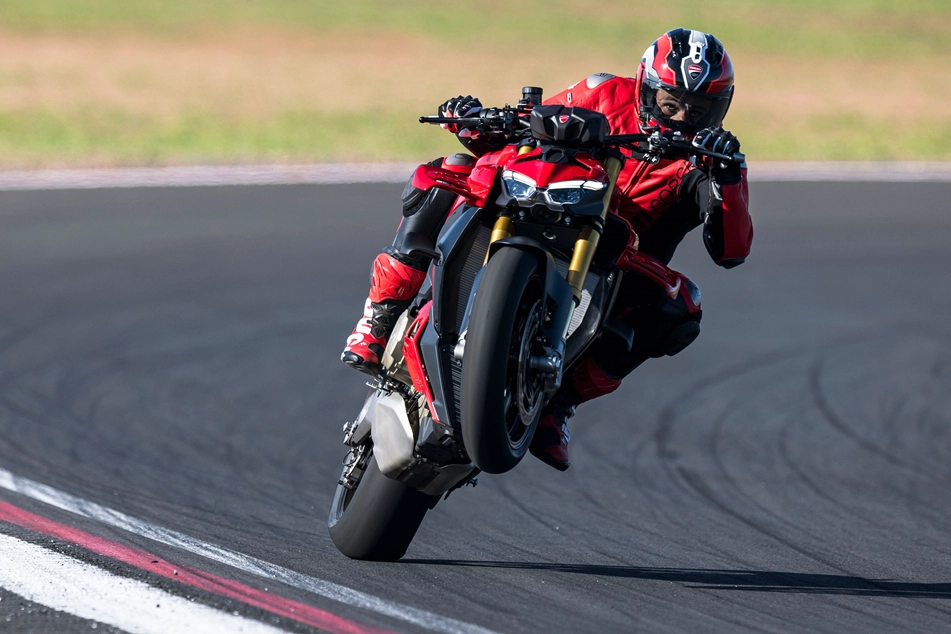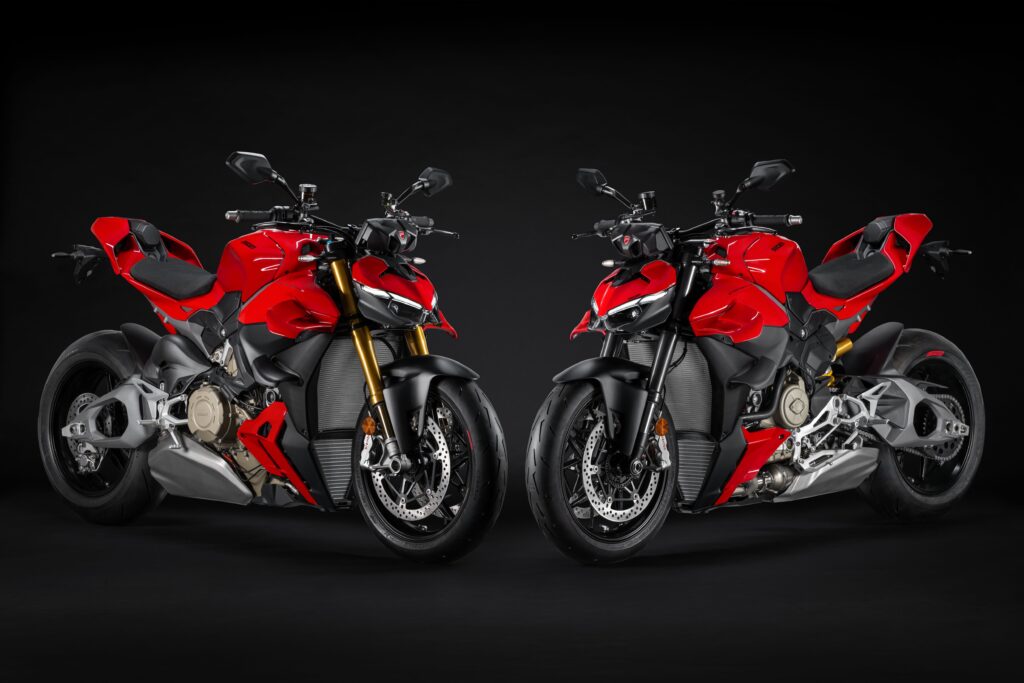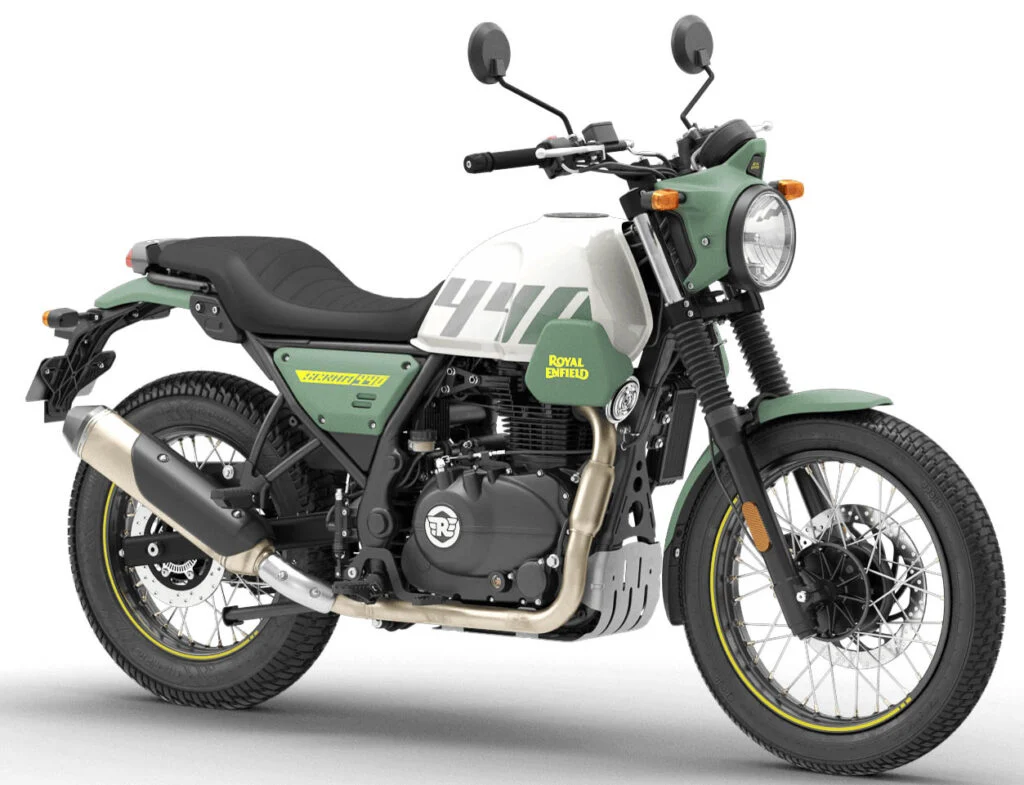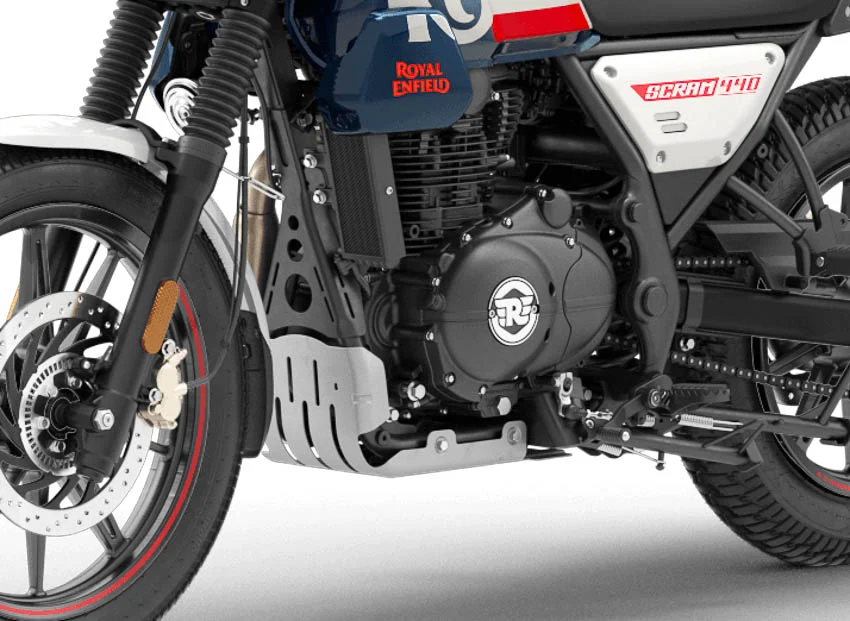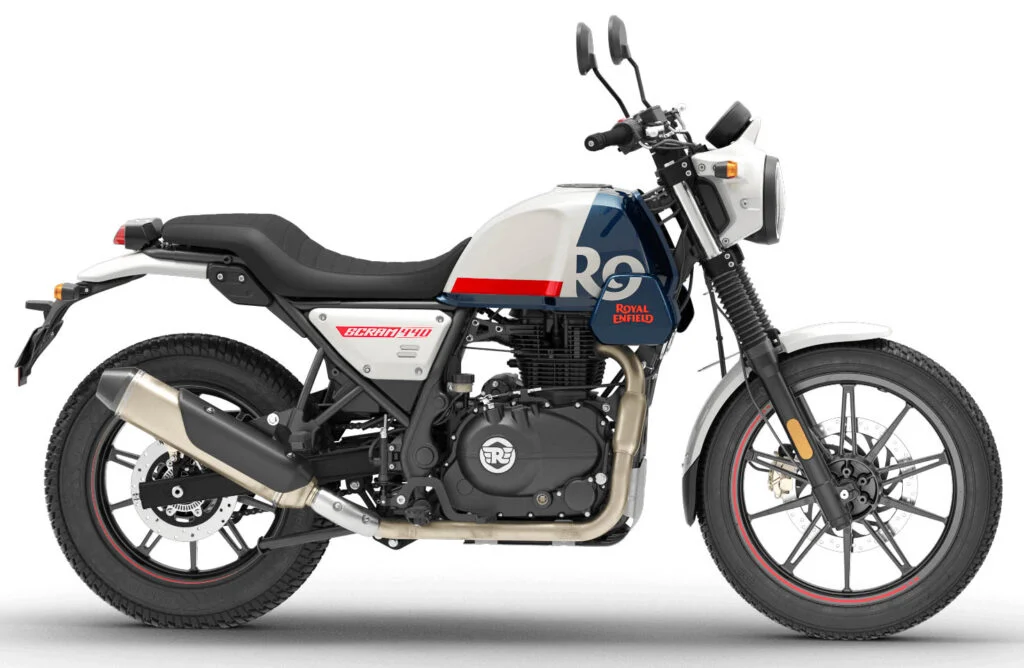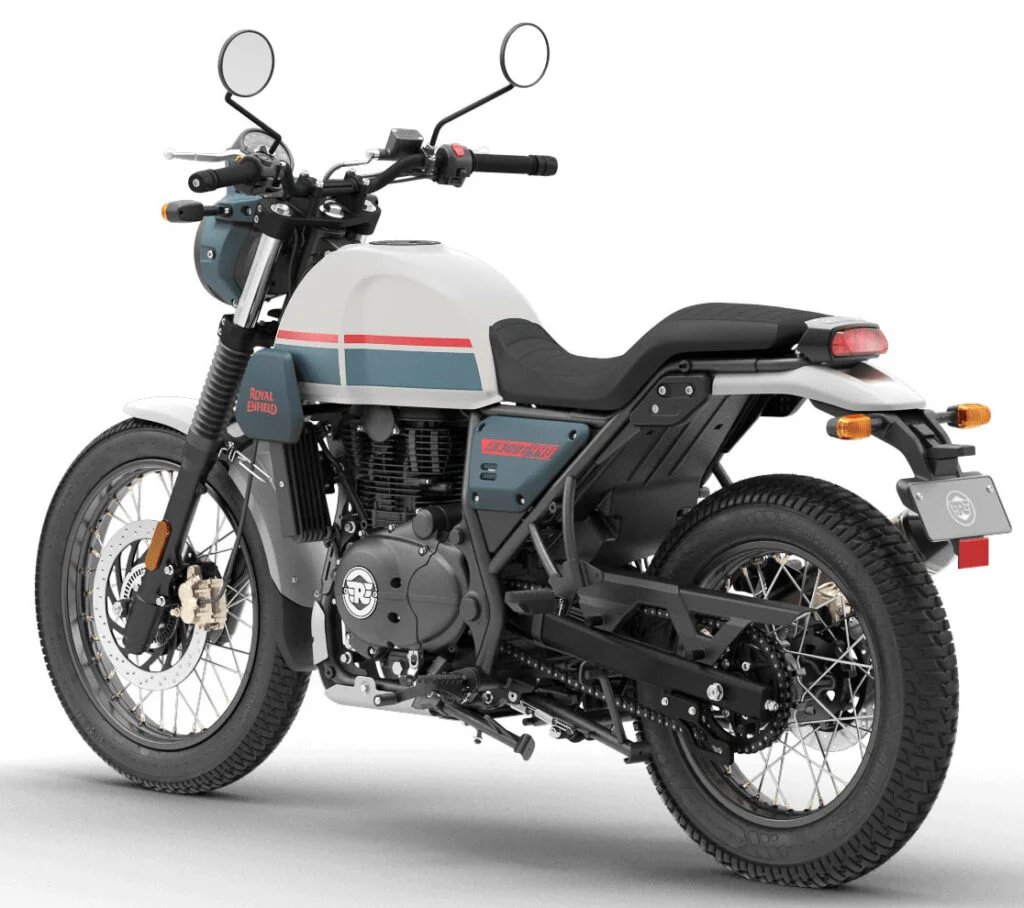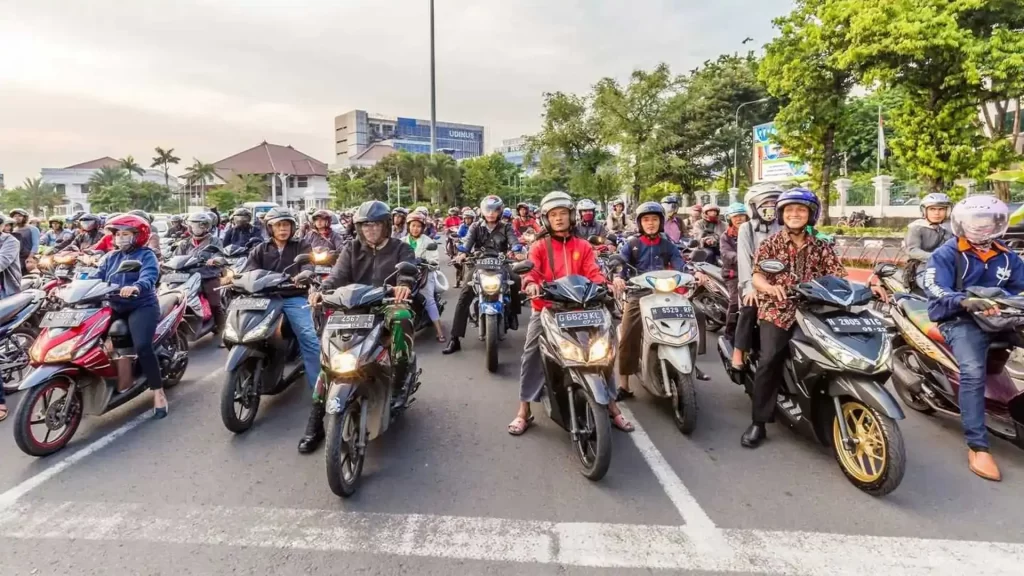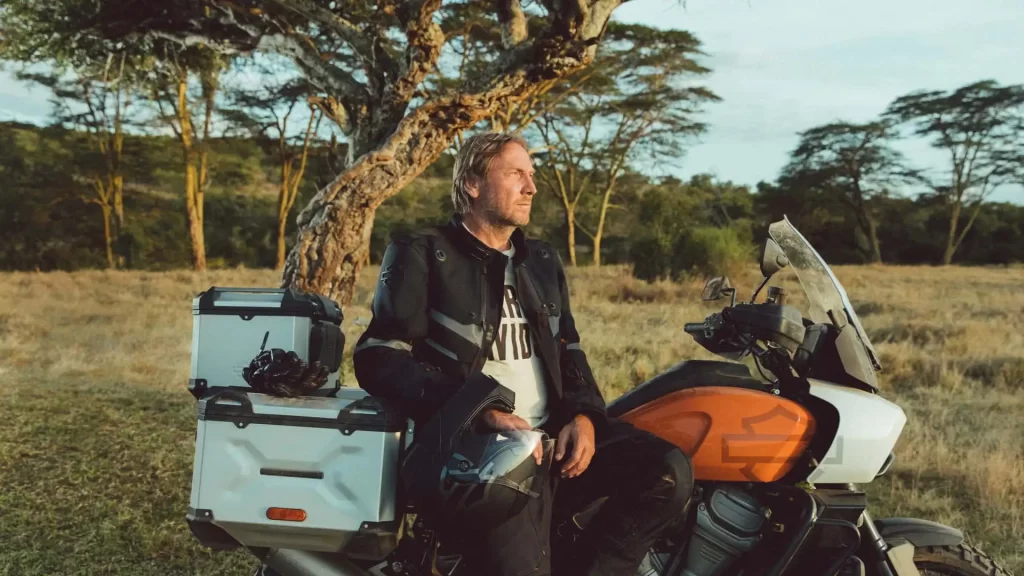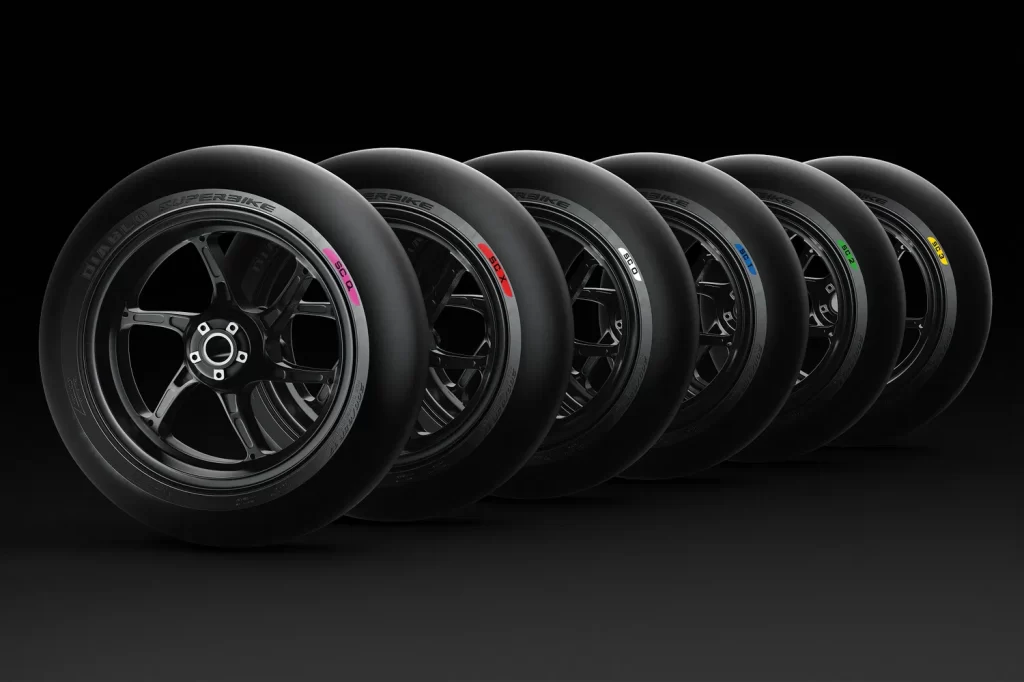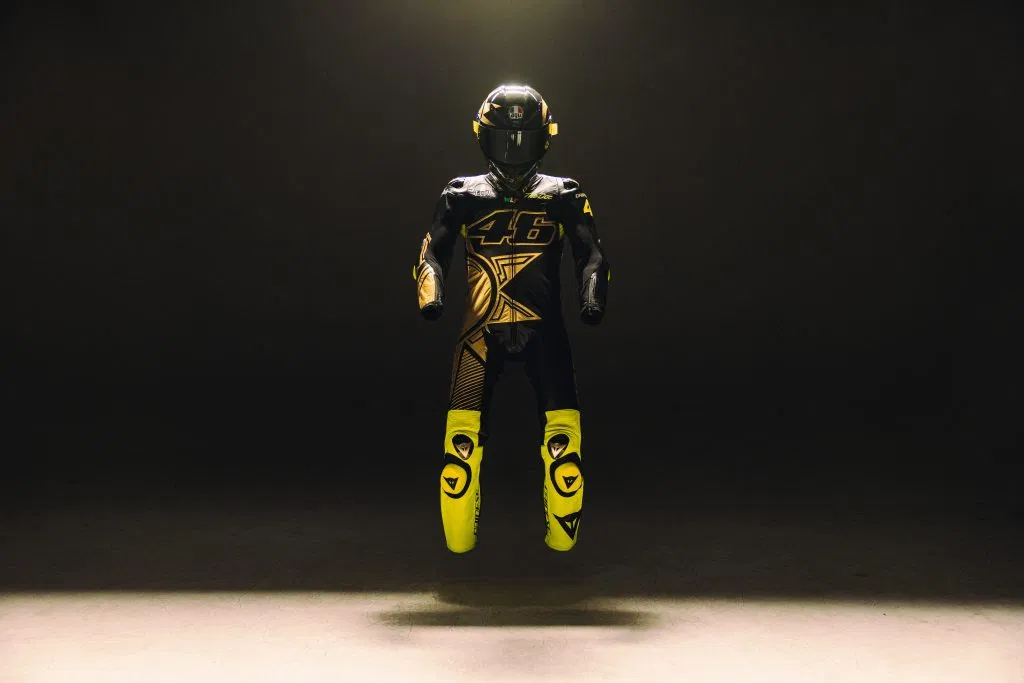The 2025 Ducati Multistrada V2 has been launched, using the same 890cc V-Twin with the 2025 Ducati Panigale V2 and 2025 Streetfighter V2.
Ducati claims that the new model is 18kg lighter than the previous Multistrada V2 which used the 937cc Testastretta V-Twin engine. The 2025 “S” variant weighs 202kg wet, with an empty fuel tank, while the standard model weighs 199kg wet, also with an empty tank.
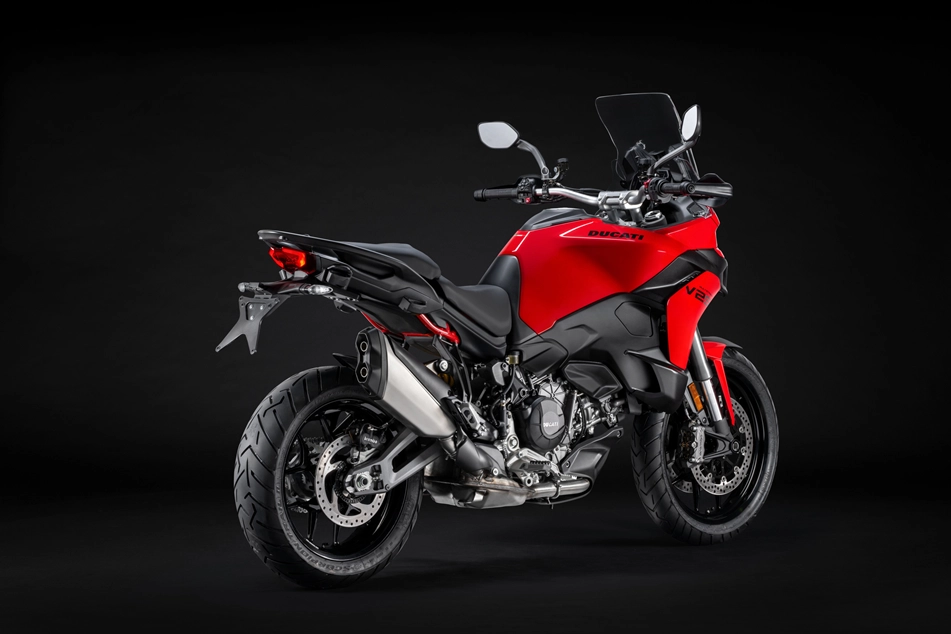
Highlights:
- The new engine is more powerful, producing 113.4hp at 10,750 RPM and 92Nm of torque at 8,250 RPM.
- This engine version also includes variable intake valve timing, providing 70% of the peak torque from 3,500 RPM, and does not drop below 75% from this point until 11,000 RPM.
- However, this engine need a clearance check at every 30,000km.
- There is a heavier crankshaft for smoother riding, and a more powerful generator to allow for more electrical equipment.
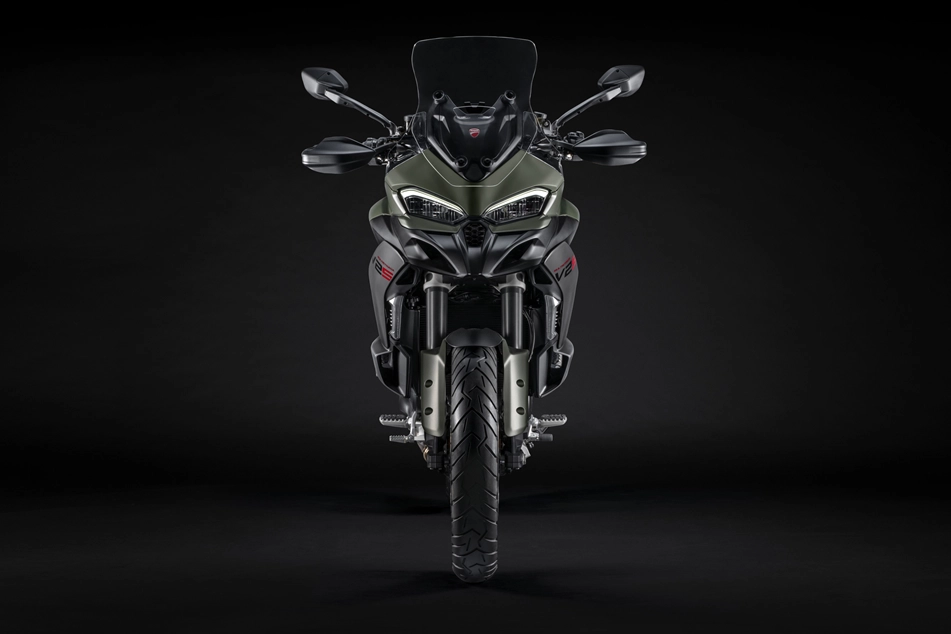
- The engine gear ratios have been revised with shorter first and second gears. Quickshifter is standard.
- A new aluminium monocoque frame holds the engine, with a cast aluminium double-sided swingarm.
- Wheels are 19-inches front and 17-inches rear, as before.
- The new bike’s styling is closer to the Multistrada V4’s rather than the old 1260 Multistrada’s.
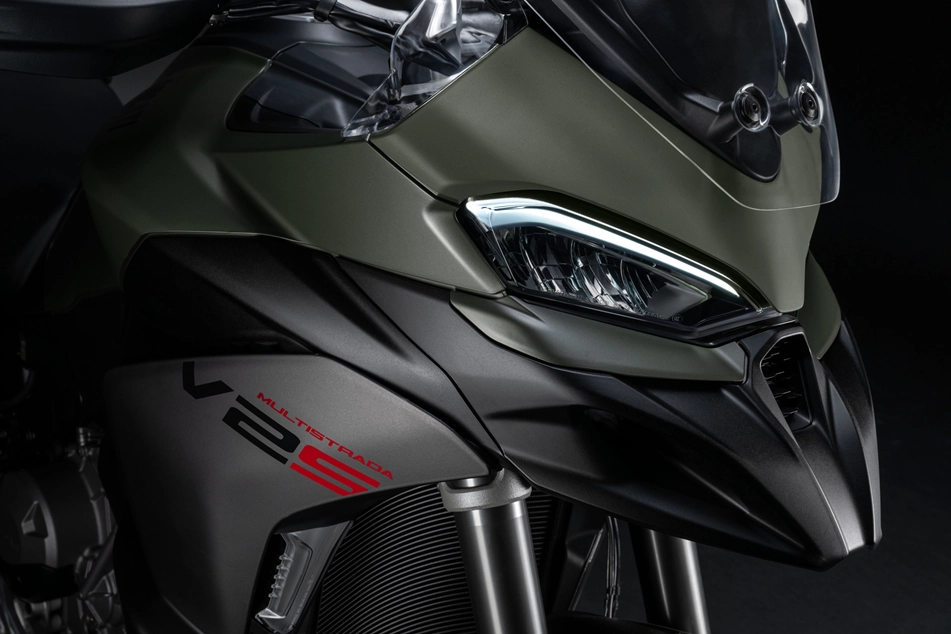
- Aerodynamics have been redesigned for rider comfort, including a new screen and sides of the bodywork to channel fresh air to the rider’s legs to reduce engine heat.
- Seat height is adjustable between 830mm and 850mm. Taller 870mm or lower 810mm accessory seats are optional.
- The 2025 Ducati Multistrada V2 S receives electronic semi-active Ducati Skyhook Suspension (DSS).
- On the other hand, the standard Multistrada V2 gets 45mm upside-down fully-adjustable Marzocchi forks, and a fully-adjustable Sachs rear shock.
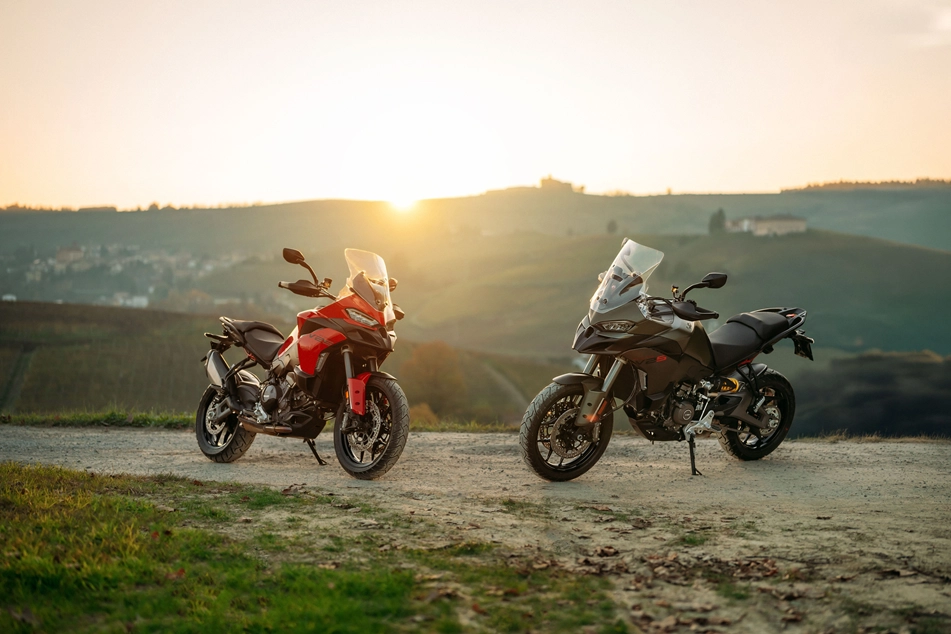
- Both variants are fitted with Pirelli Scorpion Trail II tyres and offer a road-focused 170mm of suspension travel.
- There is a full suite of electronic aids, controlled via a new 5-inch colour TFT dash.
- There are five riding modes, with configurable settings for power, traction control, anti-wheelie, and engine braking.
- Cruise control is standard too, plus options for turn-by-turn navigation.
- The ‘Coming Home’ function that keeps the low beams on momentarily after the ignition has been switched off, to make things easier in the dark.
Prices have not been announced but the 2025 Ducati Multistrada V2 will be available in certain markets from January 2025.

